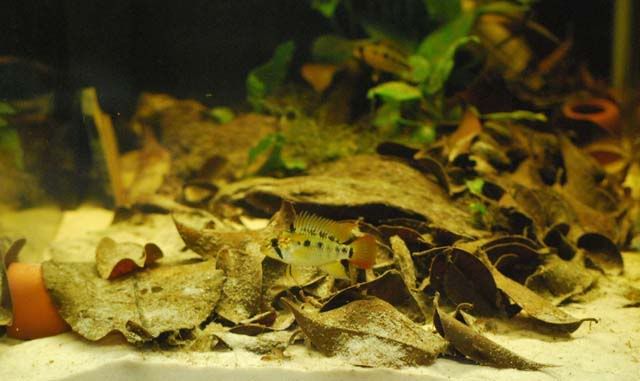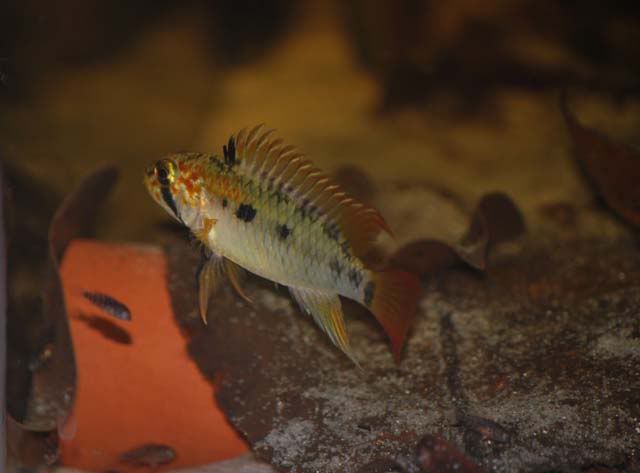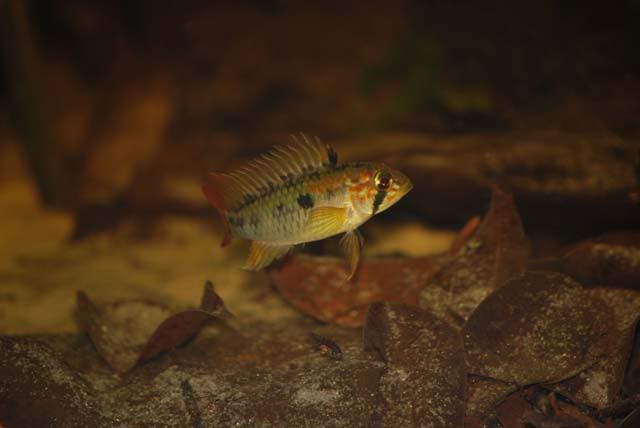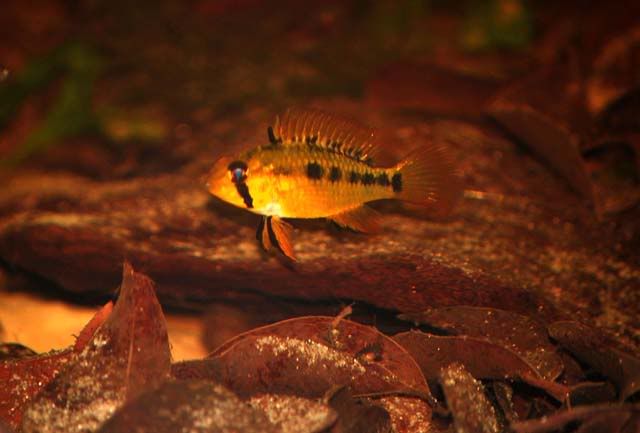- Messages
- 429
- Location
- Brisbane, Australia
As I am new to breeding apistos I thought I'd post my setup here together with a couple of questions I have and ask for some feedback to make sure I get off to a good start.
The setup I have is a 4ftx2ft tank divided into four sections effectively making it four 2x1ft tanks. I have air-driven sponge filters in each tank set to a slow bubble rate to keep water movement low.
The substrate is fine sand and each tank is decorated with a few pieces of driftwood, some plants (some anubias, java fern and java moss), as well as some leaf litter and some fake plants for additional cover. There are also some pieces of floating pipe in each tank as a refuge.
The level of lighting is fairly low due to the fact that I have only one power point in the garage and want to keep some capacity to expand, so I am running the lights off a 12V transformer (one 1W LED per tank).
There is similar set of tanks below this one with currently no decorations which I plan to use to raise the fry (should I have any).
Here are some pics of the current setup:
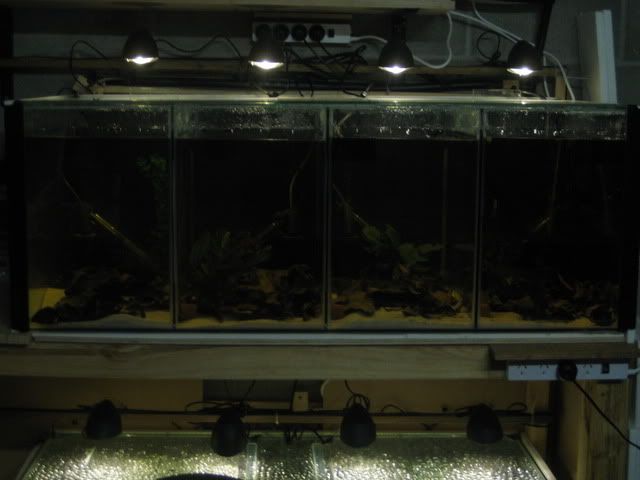

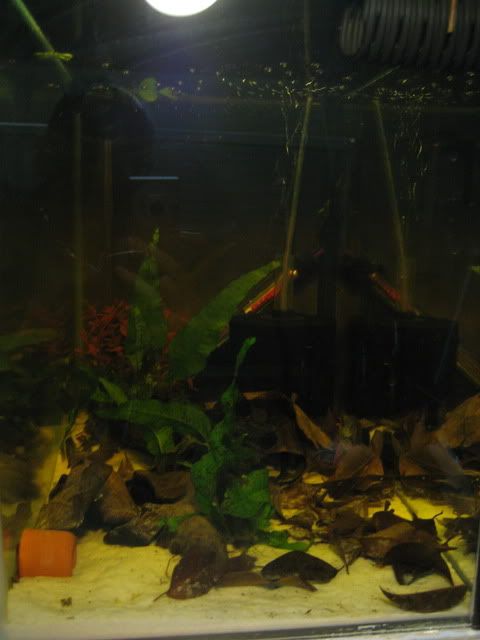
The questions I have are:
Is that enough cover for a pair of apistos per tank?
Is it better to have the decorations extend vertically a bit more?
Currently there are glass dividers between the sections, would it better to add some plastic sheets to at least partially block the view to the neighbours?
I have started stocking the tanks with a pair of A. macmasteri, A. trifasciata and A. cacatuoides 'Orange' and things seem to be fine so far.
The water here in Brisbane is fairly hard with high conductivity. After adding dechlorinator, treating with sphagnum moss and diluting with 50% rain water my water parameters are pH 5.8, kH 3-4, 350uS. I currently keep the tanks at 25 degrees Celsius.
Are those water values ok for the above species or should I dilute further with rain water to get the conductivity down?
I also have one more empty tank to fill with some fish. I have narrowed it down to either A. cf agassizii Netz - Alenquer or an A. panduro. From what I have read both are still amongst the 'easier' apistos to keep. Would either of these be ok in the above setup?
Sorry about the long post and the many questions. I am just trying to put my mind at ease that I am not creating problems right from the start.
Any input would be much appreciated.
The setup I have is a 4ftx2ft tank divided into four sections effectively making it four 2x1ft tanks. I have air-driven sponge filters in each tank set to a slow bubble rate to keep water movement low.
The substrate is fine sand and each tank is decorated with a few pieces of driftwood, some plants (some anubias, java fern and java moss), as well as some leaf litter and some fake plants for additional cover. There are also some pieces of floating pipe in each tank as a refuge.
The level of lighting is fairly low due to the fact that I have only one power point in the garage and want to keep some capacity to expand, so I am running the lights off a 12V transformer (one 1W LED per tank).
There is similar set of tanks below this one with currently no decorations which I plan to use to raise the fry (should I have any).
Here are some pics of the current setup:



The questions I have are:
Is that enough cover for a pair of apistos per tank?
Is it better to have the decorations extend vertically a bit more?
Currently there are glass dividers between the sections, would it better to add some plastic sheets to at least partially block the view to the neighbours?
I have started stocking the tanks with a pair of A. macmasteri, A. trifasciata and A. cacatuoides 'Orange' and things seem to be fine so far.
The water here in Brisbane is fairly hard with high conductivity. After adding dechlorinator, treating with sphagnum moss and diluting with 50% rain water my water parameters are pH 5.8, kH 3-4, 350uS. I currently keep the tanks at 25 degrees Celsius.
Are those water values ok for the above species or should I dilute further with rain water to get the conductivity down?
I also have one more empty tank to fill with some fish. I have narrowed it down to either A. cf agassizii Netz - Alenquer or an A. panduro. From what I have read both are still amongst the 'easier' apistos to keep. Would either of these be ok in the above setup?
Sorry about the long post and the many questions. I am just trying to put my mind at ease that I am not creating problems right from the start.
Any input would be much appreciated.



